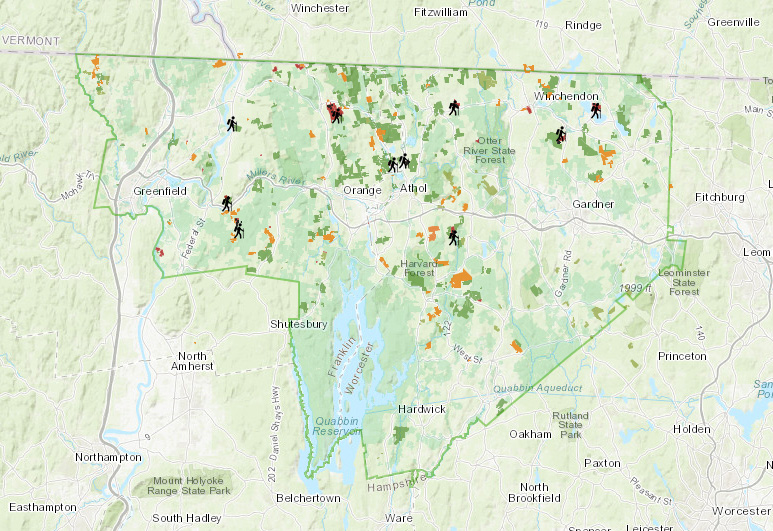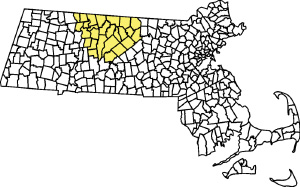Big Foot Food Forest
The Big Foot Food Forest, formerly known as the Bitzer Farm, is 38 acres of fertile, flat Connecticut River valley soil farmland and woodlands. In the spring of 2020, Annababette Wils and Mark Somerville launched a plan to create Big Foot Food Forest, an enterprise based on perennial polyculture: a wide variety of berry- and nut-producing shrubs, trees, herbs and flowers that, once established, will grow continuously. This approach means that the soil goes undisturbed, with no annual plowing or cultivating. As a result, a complex, below-ground ecosystem can flourish, high in stored carbon, nutrients and micro-organisms. A wide variety of species (for example: blueberry, raspberry, goji and elderberry; hardy almonds, pecans, walnuts) are part of the plan. This is part of the climate resilience experiment that Big Foot Food Forest has designed into its operation. Also part of this work-in-progress is an animal component—likely sheep, goats, chickens, and bees. The synergy that animals can bring to the plantings are key: grazers to keep grasses down between rows; scratching poultry to aerate compost; and pollinators for plant health and reproduction.
Ownership
Annababette Wils and Mark Somerville
Year Protected
2000
Original Grantor
John Bitzer
Property History
The land sits on an area that was once glacial Lake Hitchcock and was inhabited by the Pocumtuc tribe. The original Bitzer-Rowe Farm, established in 1798, was named after the two families who owned the land continuously until 2007. The most recent member of these families, John Bitzer (1924-2007), lived in the original homestead and continued to farm organically, often winning ribbons at the Franklin County Fair. In his later years, he worked with Mount Grace to put an Agricultural Preservation Restriction on his farmland so that the extensive road frontage would not be developed. Additionally, Mount Grace holds a conservation restriction on 18 acres of woodland south of Hatchery Rd. After his death, the historic homestead was demolished and the barn burned down. However, by putting in place the conservation and agricultural protections, John Bitzer ensured the land would remain preserved, even as the farm enters a new chapter in its history.


